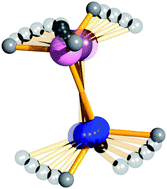Characterization of a new phase of ammonia borane†
Abstract
An uncharacterized phase of ammonia borane (

* Corresponding authors
a
Pacific Northwest National Laboratory, P.O. Box 999, MS K2-57, Richland, WA, USA
E-mail:
wendy.shaw@pnl.gov
Fax: +(509)375-6660
Tel: +(509)375-5922
An uncharacterized phase of ammonia borane (

 Please wait while we load your content...
Something went wrong. Try again?
Please wait while we load your content...
Something went wrong. Try again?
W. J. Shaw, M. Bowden, A. Karkamkar, C. J. Howard, D. J. Heldebrant, N. J. Hess, J. C. Linehan and T. Autrey, Energy Environ. Sci., 2010, 3, 796 DOI: 10.1039/B914338F
To request permission to reproduce material from this article, please go to the Copyright Clearance Center request page.
If you are an author contributing to an RSC publication, you do not need to request permission provided correct acknowledgement is given.
If you are the author of this article, you do not need to request permission to reproduce figures and diagrams provided correct acknowledgement is given. If you want to reproduce the whole article in a third-party publication (excluding your thesis/dissertation for which permission is not required) please go to the Copyright Clearance Center request page.
Read more about how to correctly acknowledge RSC content.
 Fetching data from CrossRef.
Fetching data from CrossRef.
This may take some time to load.
Loading related content
